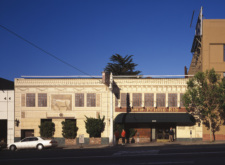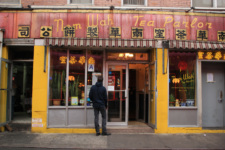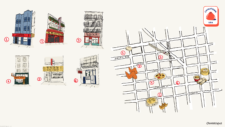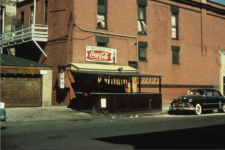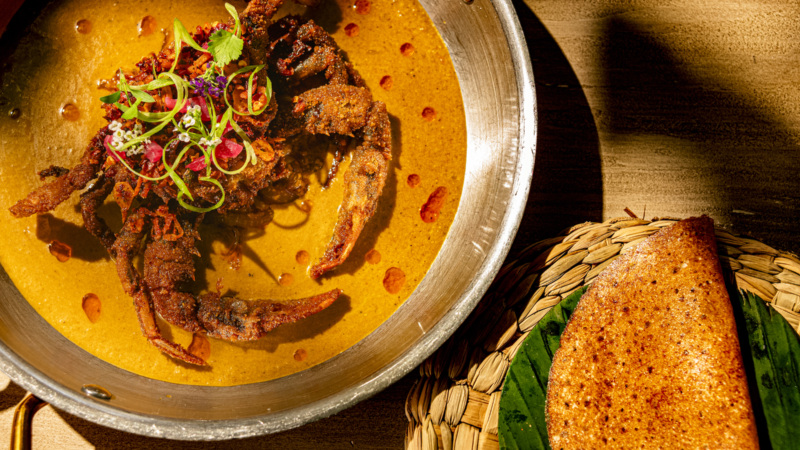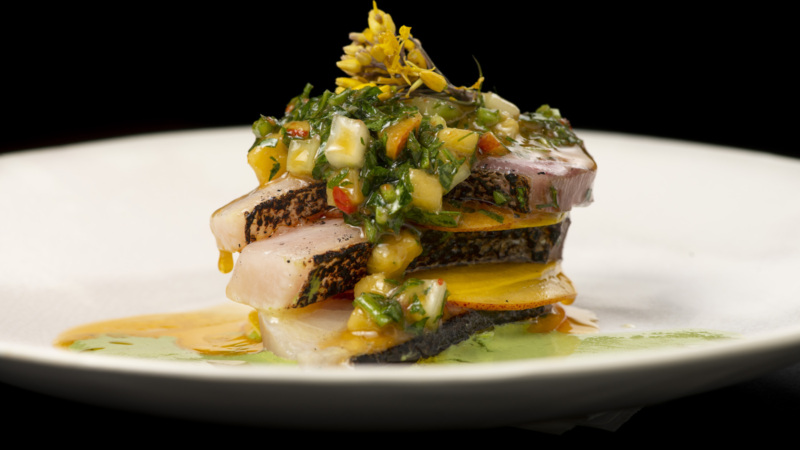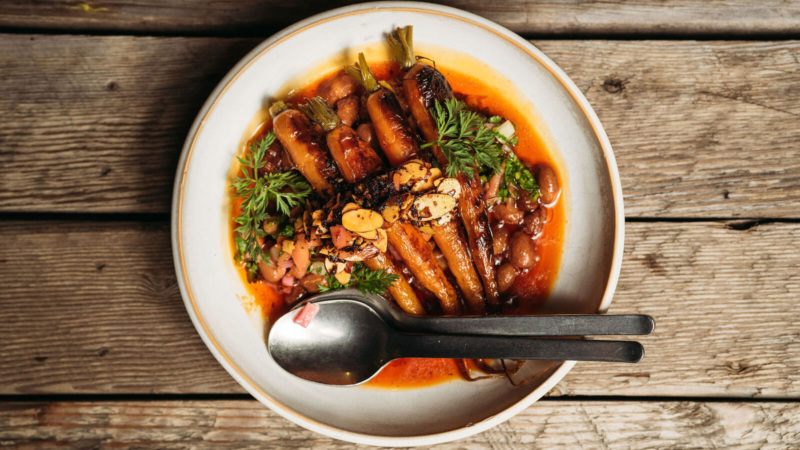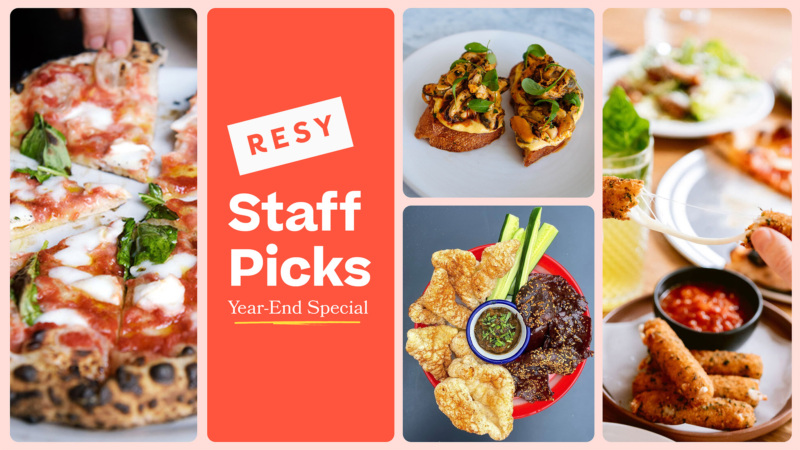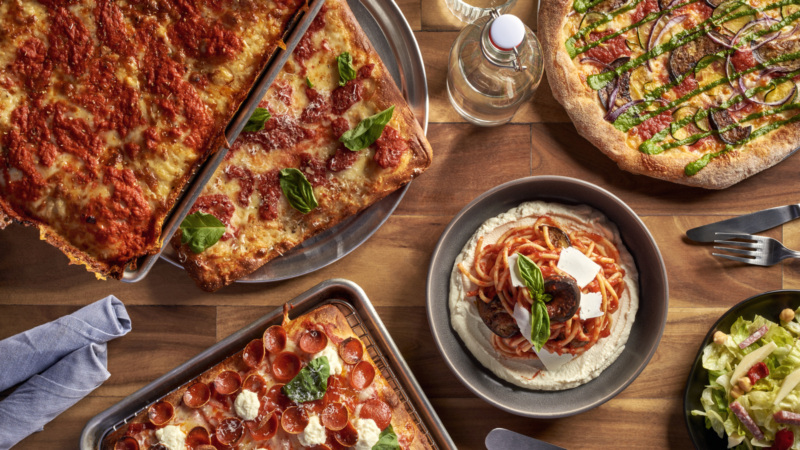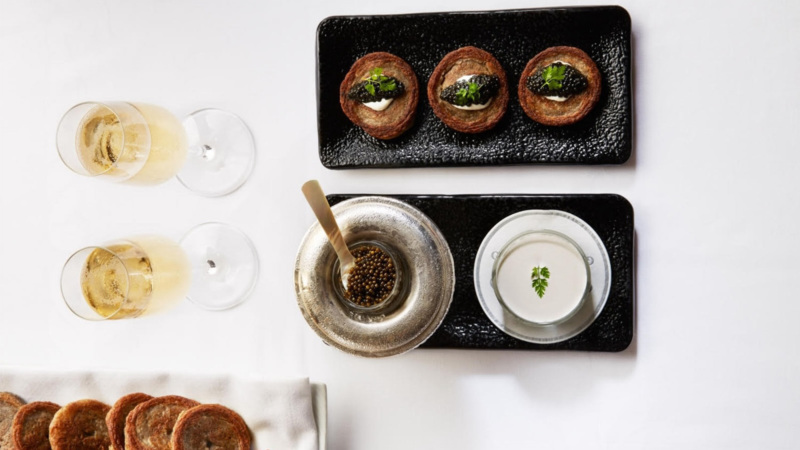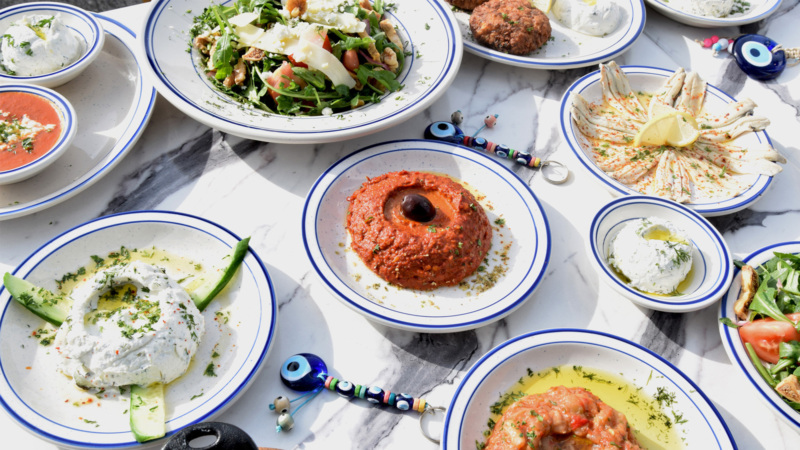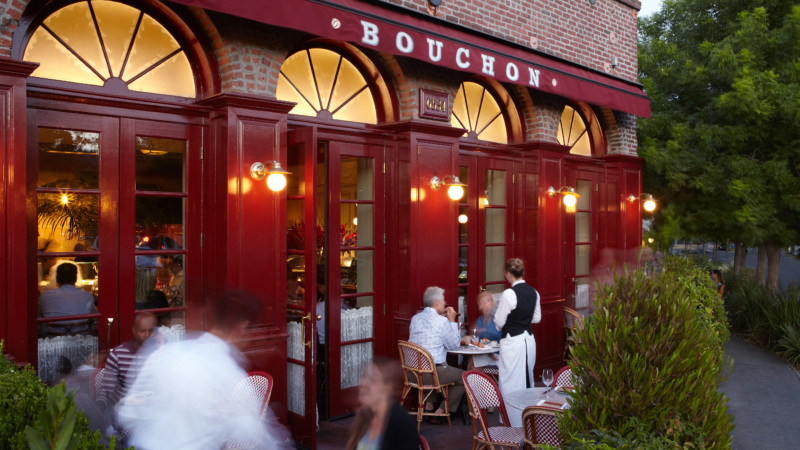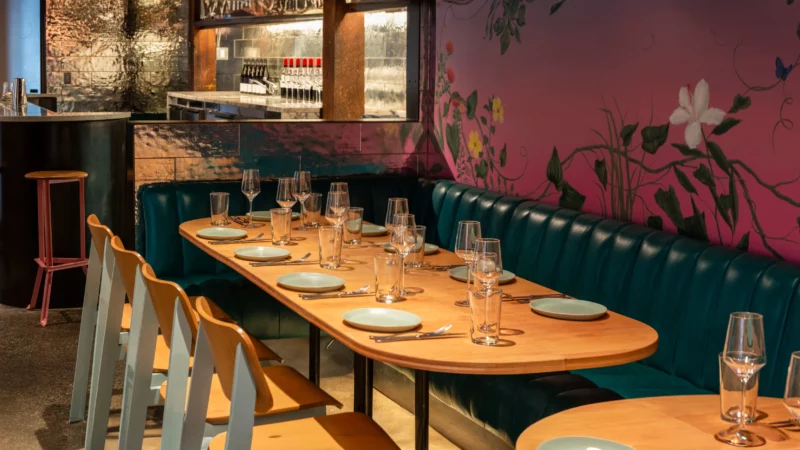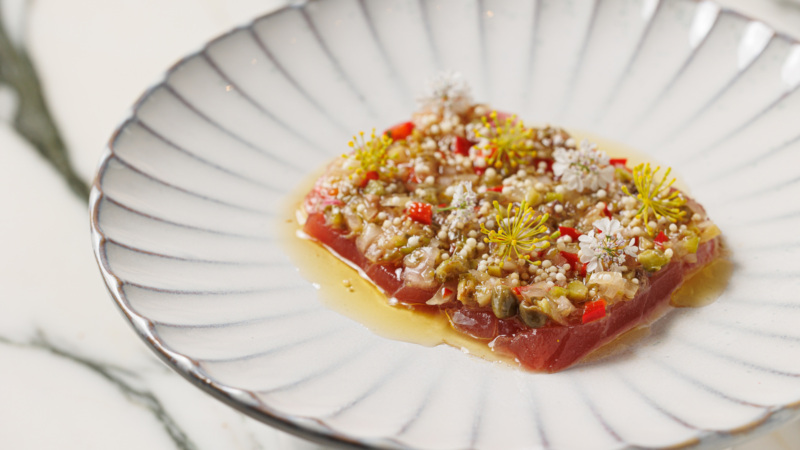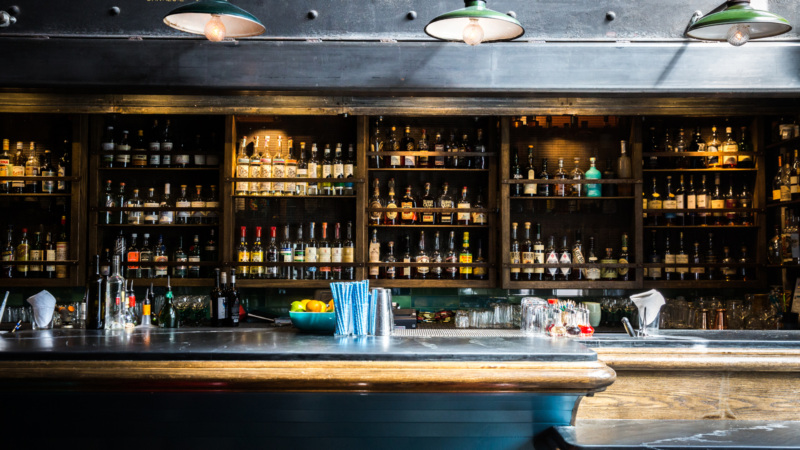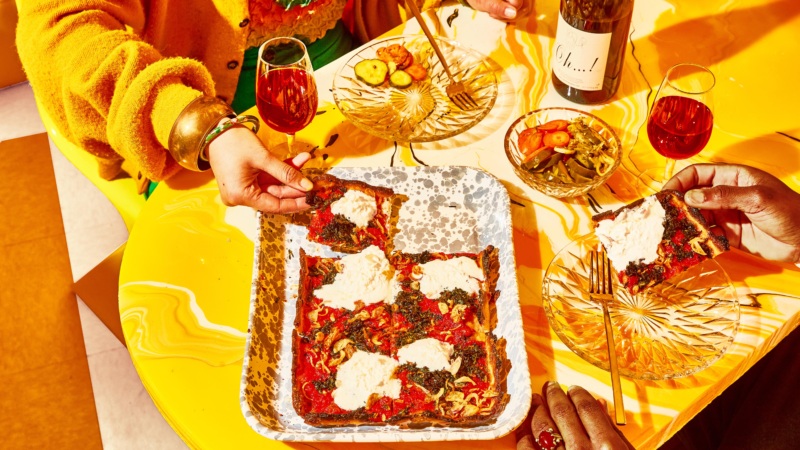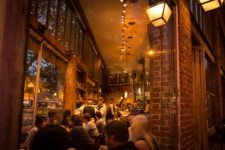
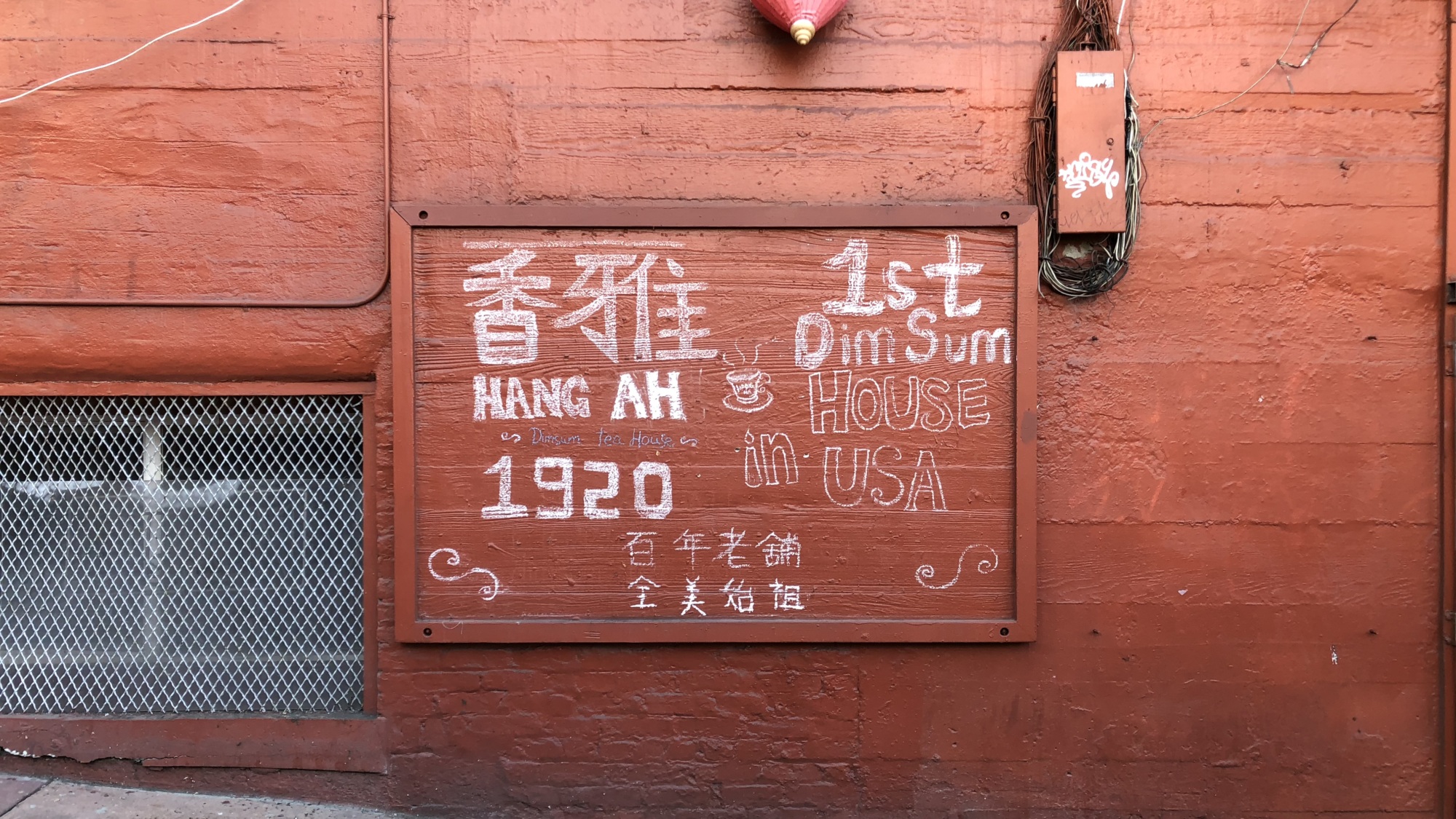
Hang Ah Remains Entwined in the Roots of Chinatown
On a morning in September 2020, the streets in San Francisco’s Chinatown are empty of the usual throngs. Anyone outside is wearing a mask, on account of the virus and the wild fire smoke. Without crowds or traffic, the clang of jackhammers ring as clear as church bells. Chinatown is always changing, and construction hasn’t stopped even now. There’s a hole at Washington and Stockton streets to fill with a new subway station. A crew is building a dragon behind the scaffold sheeting around the Willie “Woo Woo” Wong playground. Restaurants are piecing together streetside parklets for outdoor dining.
You think you know a place so well you could never forget it, until it disappears. In a city, we take the landscape for granted while knowing a square block can change overnight through demolition but also from fear. But then, no landmark in this world is fixed. Even the north pole is moving.
Ecologists use the term “shifting baselines” to describe the impossibility of understanding the present without a sense of the past. You need a point from which to measure, a landmark so that you don’t lose sight of where you have been and where you want to go, so you get a sense of those who existed before you, so you start to understand that whatever is happening at present is neither inexplicable or inevitable. We need baselines and landmarks in times like these.
When you ask people who have lived in Chinatown about the things that anchor them, the things they bring up most are what they ate here. There are restaurants that have been around for a century or longer, where you can still go and savor pure nostalgia. There’s Eastern Bakery’s coffee crunch cake, New Woey Loy Goey’s curry beef tongue, Far East Cafe banquet feasts, and Sam Wo’s jook. Everyone brings up dim sum at Hang Ah Tea Room.
Hang Ah is one of the two oldest operating dim sum parlors in the United States (the other is Nom Wah in New York). When Hang Ah Tea Room opened in 1920, the multi-story banquet houses in Chinatown already served tea, bao, and some pastries on the lower, casual dining floors. But Hang Ah was the first here to specialize in the splendid efficiency of dim sum tray service — servers running from kitchen to tables balancing an array of steamed bites, noodles, and dumplings, stuffed and folded every which way, on water-heated trays strapped over their shoulders.
Dim sum was the zeitgest of a new era in Guangzhou and Hong Kong, where gentlemen socialized and conducted occasional business over ha gow and siu mai from their tea house offices from 11 a.m. to 4 p.m. daily. Hang Ah introduced the concept of brunch as both spectacle and shared experience in a tea house that could only exist here in San Francisco’s Chinatown. Unlike its ornate neighbor Far East Cafe, which opened on Grant Avenue the same year, decked out with mahogany booths and kingfisher lanterns, Hang Ah was formica and basement lighting. There were no windows, except for what squeezed through the vault lights built into the sidewalk above. The most delicate of handwork was repeated thousands of times in its steaming closet of a kitchen.
Hang Ah’s front door opened onto Hang Ah Alley, a narrow walk between offices and the playground that only locals used. The year it opened, most neighborhood businesses kept their entries nondescript and on the side streets. The restaurants and shops that beckoned with red and gold doors on the main streets were the fulfillment of a promise to City Hall after the 1906 earthquake. Chinatown could rebuild itself, but only if it offered itself up as a tourist draw.
Hang Ah means “fragrance,” for a perfumery that once operated in the alley. But on maps, it is also Pagoda Place, for the tourists. Most who live here still call it “the alley behind the Chinese Playground,” a segregation era name, even though it was renamed in 2006 for Willie “Woo Woo,” a basketball star who learned to play on this asphalt before becoming the first Asian American to play at Madison Square Garden.
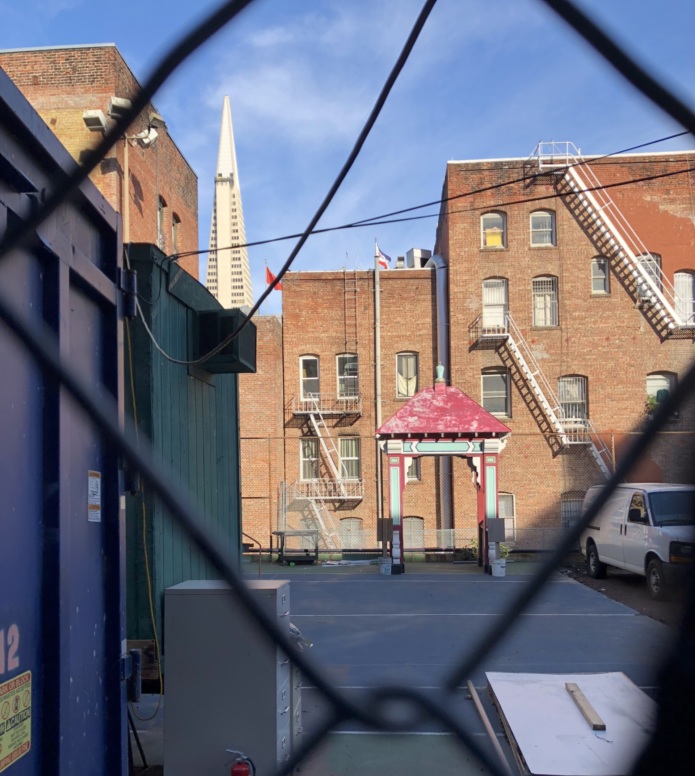
When Hang Ah opened, children of “Chinese or Mongolian descent” went to the Oriental School on the other side of the playground. No one in Chinatown could naturalize as citizens. Everyone carried identification papers at all times to avoid hard labor or deportation. That year, the world was just recovering from the shock of World War I and H1N1 flu that killed even more people than the war. There had been years of quarantines, wearing masks, shutting down school, churches, and theaters. People avoided shaking hands and stayed indoors. Boy Scouts passed out cards that read, “You are in violation of the Sanitary Code.” Everyone who survived was ready to live again.
Hang Ah made it through Prohibition, the Depression, World War II, and the end of race-based, Chinese exclusionary laws in 1965. It remained a locals’ joint for decades. Except for Danny Kaye, who flew himself up from Hollywood on weekends in his private jet for Chinese food, and Rube Goldberg (who came to own the building), most regulars were Chinese American artists, bosses, and politicos, members of the overseas Chinese democratic movement, bachelors packed in the SROs, and Chinese American families who drove in from other neighborhoods on weekends.
By June 1963, Hang Ah was popular enough to be profiled in the city paper as a worthy, mind-expanding experience, though “not many caucasians have discovered it.” With tray service, you could just point and eat. A steamer of bao, ha gow, siu mai, eggrolls, or braised beef tendon was 45 cents. The lo mein was 75 cents. The place was always packed and wouldn’t take reservations.
Today at this point in Hang Ah Tea Room’s timeline, the kitchen does takeout and delivery while the dining room is quiet. Except for the markets on Stockton stocked with necessities like chile oil and masks, things have been slow in Chinatown (as it has in every Chinatown across the country) for eight months, even before the first shelter in place orders in March. Chinatown suffered early from misinformation tangled up with racism, then the arrival of the pandemic, and now there are the California wildfires, the most active season on record.
***
There’s a Facebook group for people who grew up in this neighborhood. They reminisce about Hang Ah, and post sightings of neighbors drying fish and greens on the playground fence out in front. They swap stories about the bottled soda machine that used to be by the door, and playing basketball on the playground outside while their parents finished their tea. Some probably remember when dim sum was known as “Chinese Sunday tea,” “Chinese tea lunch,” “Chinese hors d’oevres,” “Oriental snacks,” or “Chinese tapas,” and then when huge, steam carts filled with endless varieties rolled into town at other, bigger restaurants in the 1970s. That’s when dim sum became its own reference point.
Candidly, they’ll tell you, when they come to Hang Ah now, the food isn’t the same, not since it passed hands in this decade or that. The decor is different. There’s a window now. But they still go. For the ha gow and the char siu pork, which is hang roasted over open flames, and for history’s sake. Because Hang Ah is their anchor. Current owner Frank Chui says he keeps many items on the menu just for them. In a city, a landmark is a place so interwoven into the community that the relationship is symbiotic.
One hundred years ago, the year Hang Ah opened, the Save the Redwoods League began buying up groves that became the backbone of California’s great parks. At Big Basin State Park, the first of them, there are some coast redwoods that are over 300 feet tall and thousands of years old. Most of the big trees were cut down during the Gold Rush, the era that brought the first wave of Chinese settlers who would build Chinatown and find work framing the western boomtowns, building railway trestles, and carving cradles and coffins out of redwood.
A tree can stand for 2,000 years and fall in seconds. There are places like that too in Chinatown.
We don’t know yet which of the big trees will be left when the fires are out. The oldest, the giants and the titans, don’t always grow the tallest. They grow wide at the base and reach their roots out for surprisingly long distances. The older the tree, the more its roots mingle and merge with its neighbors’. Their roots form a dense mat that holds them all in place and protects their growth. The more they are interwoven, the better they can keep the fires at bay.
Hang Ah: 1 Pagoda Place, San Francisco.
Tienlon Ho co-wrote the cookbook Mister Jiu’s in Chinatown (coming 2021) with chef Brandon Jew. Follow her @tienlonho on Instagram.

